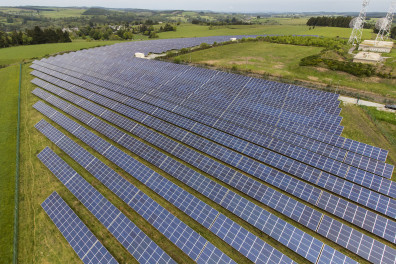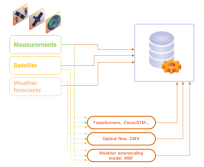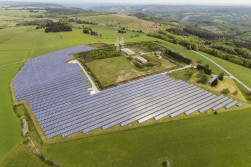Maximizing solar potential
 23 Jun 2023
23 Jun 2023
 23 Jun 2023
23 Jun 2023
From short-term operational planning to long-term capacity expansion, multi-period photovoltaic power forecasts play an essential role in optimizing plant production capacity, ensuring grid stability and maximizing return on investment.
Short-term forecasts, from minutes to days
In the short term, an accurate forecast of photovoltaic capacity is essential for grid operators to effectively manage the balance between energy supply and demand. Short-term forecasts help grid operators to optimize dispatch strategies, minimize power imbalances and integrate renewable energy sources seamlessly.
Medium-term forecasts, from a few days to a few weeks
This forecasting horizon is particularly important for energy traders, plant operators and grid operators. Accurate medium-term forecasts facilitate operational and strategic planning of solar resources by anticipating production, and support storage management and revenue optimization.
Long-term forecasts, from months to years
Long-term forecasts are mainly used for large-scale PV capacity planning by grid operators, and for formulating policies for the national energy mix. They determine future energy production potential in order to draw up roadmaps for the energy transition.
The TMY (typical meteorological year) forecast for the duration of operation
Annual forecasts are crucial for assessing the economic viability of photovoltaic projects. They rely on previous years to assess the solar resource and validate the potential of the installation, taking into account inter-annual variability, the effects of climate change and technological advances. By accurately projecting long-term photovoltaic energy production, investors, banks and developers can make informed decisions and develop new infrastructure to meet renewable energy targets.
The intermittent and unpredictable nature of solar energy, the complexity of meteorological models and the need to process data from several sources simultaneously (NWP, weather simulation, satellite imagery, on-site data...) with different temporalities and resolutions are a major impediment to obtaining reliable and accurate forecasts.
However, advances in data analysis (thanks to Machine Learning), satellite image resolution (MTG-I) and meteorological modelling have considerably improved forecast accuracy.After 6 years of R&D, CalibSun has developed an algorithm capable of processing data in an unprecedented way using a probabilistic approach and continuous learning, offering better forecasts at different temporalities and on several scales, from local to global.
Find out more about our NEXT solution >


 en
en 
 fr
fr es
es de
de



